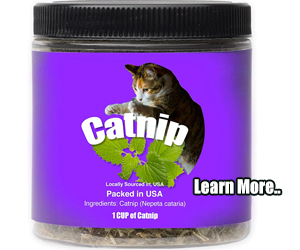Cholla Cactus
Cylindropuntia

Cholla cactus represent more than 35 species of the Cylindropuntia (Family Cactacea) in the North American deserts. Cholla is a term applied to various shrubby cacti of this genus with cylindrical stems composed of segmented joints. These stems are actually modified branches that serve several functions -- water storage, photosynthesis and flower production.
Like most cactus, chollas have tubercles -- small, wart-like projections on the stems -- from which sharp spines -- actually modified leaves -- grow. But chollas are the only cactus with papery sheaths covering their spines. These sheaths are often bright and colorful, providing the cactus with its distinctive appearance.

Prickly pears are also members of the Opuntia genus, but their branches are manifested as pads rather than cylindrical joints. Opuntia are unique because of their clusters of fine, tiny, barbed spines called glochids. Found just above the cluster of regular spines, glochids are yellow or red in color and detach easily from the pads or stems. Glochids are often difficult to see and more difficult to remove, once lodged in the skin.
Range & Habitat
Cholla cactus are found in all of the hot deserts of the American Southwest, with different species having adapted to different locale and elevation ranges. Most require coarse, well-drained soil in dry, rocky flats or slopes. Some have adapted to mountain forests, while others require steep, rocky slopes in mountain foothills.
Description
Most cholla cactus have orange or greenish-yellow flowers with a variety of colors, even among the same species. Most species bloom April through June, depending on local conditions. Stems and joints vary in width, length, shape, and color, as well as in the profusion of spines and glochids. Chollas may appear as ground creepers, shrubs or trees, varying in height from less than a foot (Club or Devil Cholla) to as much as 15 feet (Chain-Fruit Cholla).
Information on the species below is based on wild, non-cultivated samples.
BUCKHORN CHOLLA / MAJOR CHOLLA / YELLOW-FLOWERED CANE CACTUS
Opuntia acanthocarpa
This light green cholla is widespread, appearing in different locales. Spine sheaths are inconspicuous and light colored. Five variations include acanthocarpa, coloradensis, ganderi, major and thornberi.
Desert: Sonoran Desert
Height: 3-10 feet
Joints: Long & straggly
Flowers: Bright yellow, orange, pink or red
Fruit: Spiny & dry
Elevation: 500-4,000 feet
CANE CHOLLA
Opuntia spinosior
Grows from desert floors to grasslands to lower mountain slopes, developing a thick trunk and with purple jointed joints.
Desert: Chihuahuan Desert of southern Arizona and southwestern New Mexico
Height: Up to 8 feet
Joints: Thick, tubercled, covered with gray spines
Flowers: From deep purple to yellow and white
Fruit: Flesh, spineless, yellow in winter
Elevation: 2,000-7,000 feet
CHAIN-FRUIT CHOLLA / CHAIN CHOLLA / JUMPING CHOLLA
Opuntia fulgida
The largest of the chollas, up to 15 feet tall, is a very spiny cactus, usually a shrub, but sometimes more like a tree. New fruits are added to those from previous seasons, creating a chain up to 2 feet long -- hence the name "chain fruit."
Desert: Sonoran Desert of central and south Arizona and northwest Mexico
Height: Up to 15 feet
Joints: Small, oblong, yellow-green with short, colored spines
Flowers: White and pink petals streaked with lavender
Fruit: 1 1/2 inch green, spineless, pear-shaped berries grow in clusters and hang in long, branched chains
Elevation: 0-4,000 feet
CHRISTMAS CHOLLA/ HOLYCROSS CHOLLA / DESERT CHRISTMAS CACTUS
Opuntia leptocaulis
The most slender of all chollas, and the mostly widely distributed in the Chihuahuan desert. Red berries give it a seasonal appearance.
Desert: Chihuahuan Desert of southern Arizona, New Mexico and Texas
Height: 4-6 feet
Joints: Slender and smooth, uninterrupted by tubercles
Flowers: Yellow to bronze
Fruit: Bright-red, grape-sized berries last throughout the winter
Elevation: 200-5,000 feet

DEVIL CHOLLA / CLUB CHOLLA
Opunria clavata, Opucia parishii, Opuntia schotti, Opuntia stanlyi
The various species of Devil Cholla are all Club Cholla, so-called because they have club-shaped joints with well-defined tubercles. Devil Cholla have no sheaths on spines. All are low-growing, often forming thick mats that can be impenetrable. Spines come in all colors, but can be sharp as daggers.
Opuntia clavata
Desert: Chihuahuan of central New Mexico
Height: Up to 4 inches
Joints: Form at base of older joints and lie on the ground
Flowers: Lemon-yellow to greenish
Fruit: Yellow, spiny, 3 inches long
Elevation: 6,000-8,000 feetOpuntia parishii
Desert: Mojave Desert of eastern California, southern Nevada and eastern Arizona
Height: Up to 4 inches
Joints: Obovoid segments up to an inch in diameter
Flowers: Lemon-yellow with greenish centers
Fruit: Fleshy, smooth, yellow, to 3 inches long
Elevation: 6,000-8,000 feetOpuntia schotti
Desert: Chihuahuan Desert of west Texas
Height: Up to 12 inches
Joints: Form at base of older joints and lie on the ground
Flowers: Lemon-yellow to greenish
Fruit: Yellow, spiny, 3 inches long
Elevation: 1,000-5,000 feetOpuntia stanlyi
Desert: Sonoran and Chihuahuan deserts from Southern California to southwestern New Mexico
Height: Up to 12 inches
Joints: Form at base of older joints and lie on the ground
Flowers: Lemon-yellow to greenish
Fruit: Yellow, spiny, 3 inches long
Elevation: 300-4,000 feet
DIAMOND CHOLLA / PENCIL CACTUS
Opuntia ramoissima
Usually a low shrub growing in the driest deserts, prominent yellow or tan spine sheaths have an orange tip. Only cholla with a grooved surface.
Desert: Sonoran Desert of southeastern California, southern Nevada and southwestern Arizona
Height: Up to 5 feet
Joints: Pencil-sized, gray stems are grooved, producing diamond-shaped tubercles.
Flowers: Dark pink to apricot
Fruit: Spiny, dry burrs
Elevation: 100-3,000 feet
KLEIN'S CHOLLA
Opuntia kleiniae
This trunkless cholla is similar to Pencil and Christmas chollas, but has thicker stems. Spines grow 4 to a cluster and point down.
Desert: Sonoran and Chihuahuan deserts from central Arizona to western Texas.
Height: 3-7 feet
Joints: Thick and tuberculate
Flowers: Pink to purple
Fruit: Smooth red or orange
Elevation: 2,000-6,500 feet
PENCIL CHOLLA
Opuntia arbuscula
Similar to Klein's and Christmas chollas, Pencil Cholla grows with a trunk instead of as a sprawling shrub. Enjoys sandy and gravelly plains, valleys and washes.
Desert: Sonoran Desert of southeastern California and southwestern Arizona
Height: 2-5 feet
Joints: Long, thin, deep green pencil-sized without tubercles
Flowers: Yellow to orange
Fruit: Fleshy and green
Elevation: 1,000-4,500 feet
SAND CHOLLA
Opuntia pulchella
This cholla grows in a clump from a bristled-covered tuber, favoring higher elevation dry-lake borders and sandy flats
Desert: Northern Mojave Desert from eastern California to southern Utah
Height: Up to 10 inches
Joints: Narrowly club-shaped to cylindrical, 1 inch diameter
Flowers: Pink to magenta with yellow-green filaments
Fruit: Smooth, red, fleshy and barbed, up to 1 inch long
Elevation: 4,500-7,000 feet
SILVER CHOLLA / GOLD CHOLLA
Opuntia echinocarpa
White or yellow sheaths provide this cholla both the common names Silver and Gold. This bushy, short-trunked species has many short terminal joints at the ends of longer ones.
Desert: Sonoran Desert of western Arizona, southern Nevada and southeastern California
Height: Up to 5 feet
Joints: Small, oblong, yellow-green with short, colored spines
Flowers: Greenish yellow, out portions red-streaked
Fruit: Spiny and dry up when ripe
Elevation: 1,000-5,000 feet
STAGHORN CHOLLA / TREE CHOLLA / DEERHORN CHOLLA
Opuntia versicolor
With forked branches resembling deer antlers this tree-like cactus hybridizes easily with Buckhorn and Cane chollas, making identification difficult.
Desert: Sonoran Desert within 100 miles of Tucson, Arizona, and south into Mexico
Height: 3-15 feet
Joints: Dull green forming very long stems
Flowers: All varieties (versicolor)
Fruit: Green, pear-shaped, fleshy, sometimes forming chains
Elevation: 1,000-4,000 feet
TEDDY BEAR CHOLLA / JUMPING CHOLLA
Opuntia bigelovii
Said to resemble the fuzzy arms and legs of a Teddy Bear, it can be distinguished by its dense, straw-colored spines and yellow to green flowers.
Desert: Sonoran Desert of western Arizona, southern Nevada and southeastern California
Height: 5 -9 feet
Joints: Small, oblong, yellow-green with short, colored spines
Flowers: Greenish to yellow with lavender streaks
Fruit: Egg-shaped, yellow to 1 inch long
Elevation: 100-5,000 feet

TREE CHOLLA
Opuntia imbricata
Green and somewhat spineless, this cholla resembles the Cane Cholla, which also turns purplish in colder weather. Prevalent in desert flats, and in Pinyon and Juniper stands.
Desert: Chihuahuan Desert of New Mexico and Texas north to semi-desert areas of eastern Colorado and western Oklahoma.
Height: Up to 7 feet
Joints: Very fat with tubercles
Flowers: Deep lavender to red
Fruit: 2-inch-long, yellow, oval
Elevation: 2,000 -7,000 feet
WHIPPLE CHOLLA
Opuntia whipplei
These cholla often grow as shrubs or in mats on plains and grasslands.
Desert: Chihuahuan Desert of eastern Arizona and western New Mexico
Height: Up to 30 inches
Joints: Green, cylindrical to 6 inches long
Flowers: Pale to lemon yellow
Fruit: Yellow, spineless round to ovoid, about 1 1/2 inches long
Elevation: 4,500-7,000 feet
WOLF'S CHOLLA
Opuntia wolfii
This common cholla of the Colorado Desert has brown, 1-inch spines with translucent sheaths.
Desert: Western edge of Sonoran Desert to Baja California
Height: Up to 6 feet
Joints: Branched from base in cylindrical segments
Flowers: Pale brown with purple filaments
Fruit: Dry, tubercled, 1 inch long
Elevation: 1,000-4,000 feet
-- A.R. Royo
More Cactus Articles
Desert Cacti
Prickly Pear Cactus
Beavertail Cactus
Chain Fruit Cholla
Desert Christmas Cactus
Prickly Pear Sweets & Treats
Share this page on Facebook:
The Desert Environment
The North American Deserts
Desert Geological Terms










